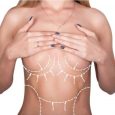Cupping therapy earned its place in the spotlight during the 2016 Olympics when athletes like Michael Phelps and the entire USA men’s gymnastics team sang its praises.
But if you saw the marks leftover from this traditional procedure, you might be questioning how worth it the therapy really is. Those dark red bruises might have you wondering, “Is cupping therapy painful?”

We’re here to answer your questions about this sort of therapy and help you learn what you can expect if you book an appointment.
What Is Cupping, and What Can It Help With?
Cupping is a sort of natural therapy that you can usually find at a physical therapy clinic. It’s also often offered in conjunction with acupuncture or other forms of holistic therapy. It involves applying suction at different points on the body using cups, usually made from glass or plastic.
This sort of suction helps guide circulation to bring more blood flow to the surface of the skin. This is thought to help with both physical and emotional ailments due mainly to the benefits of moving fluids regularly throughout the body.
Generally, this sort of therapy treats pain and muscle tension.
Read more about: Benefits of Hijama.
Different Types of Cupping
There are a couple of different methods of cupping. In dry cupping, the more traditional form, your practitioner will place a flammable substance inside the cup. As the flame goes out, the cup is placed on your skin, creating a vacuum seal that draws your skin up into the cup.
In wet cupping, your skin is punctured before the cup is placed, and blood is drawn out during the suction process.
In traditional forms of cupping, the cups are usually left in place for anywhere from five to twenty minutes. There is, however, also a variation of this treatment that involves sliding the cups around. This method is generally used for larger muscle groups like the back to treat pain or muscle spasms.
Is Cupping Therapy Painful?
If you’ve been wondering, “What does cupping feel like?” you can rest assured that it won’t necessarily be unpleasant.
Although you may feel some tension in your skin and a sort of pulling sensation, cupping is a mostly painless procedure. While the welts that occur during the course of the therapy leave cupping bruises, most people say that the procedure itself feels like a deep tissue massage.
Is There Pain After Cupping?
The cupping bruises will probably stick around for a couple of days after your appointment, but they shouldn’t hurt, either. They’ll also fade on their own. You may feel some temporary soreness, but this should also recede soon after your session.
Time to Try Cupping Therapy?
Now that you know the answer to, “Is cupping therapy painful?” you can better decide if it’s right for you. If you’ve been suffering from chronic muscular pain, it might be worth finding a professional therapist to give you a cupping session.
If you found this article helpful, be sure to check out some of our other health posts!




